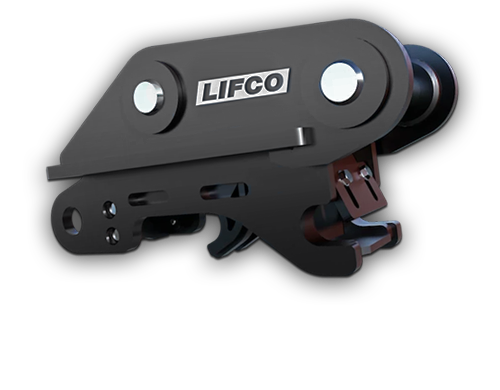RAKES TO LAST GENERATIONS
Our rakes are designed, cut, and welded in-house using fifth generation designs where the geometry, grades, and thicknesses of steel are optimized for the best cost-weight ratio. The Severe duty option is available on the scoop and root rakes - meaning it has replaceable teeth, thicker shanks, and an angled cutting edge.
- Scoop Rakes: The scoop design allows the operator to get right under stumps, big rocks, and large roots and use the machine's force in an upward motion. Best used in moderate to heavy applications.
- Root Rakes: Made to clear surface material, shallow roots, brush, and branches. Can be used with or without a thumb. Best used in moderate applications.
- Low Profile Rakes: Comes in a standard or scoop profile. These rakes sift through loose roots and smaller rocks, leaving a perfectly groomed landscape.
- Deep Penetration Rakes: Engineered for heavy duty tasks such as large scale clearing jobs and deep ground penetration. Comes with replacement CAT style teeth and extra thick shanks.
Unsure where to start? We are here to help. Please fill out the contact form at the bottom of this page.
Featured Videos
/i.ytimg.com/vi/2g7MEhZsL0Y/maxresdefault.jpg) Loading video...Building The Perfect Heavy Duty Root Rake From ScratchWhen putting together a heavy-duty root rake, spacing is crucial. The correct measurements are provided in the drawings, but sometimes the smaller ones are easier to work with. The issue this time was the spacing, especially since there are no lap joints like on the severe-duty versions. Previously, lap joints were used for extra strength, but they added more material and required more welding. No
Loading video...Building The Perfect Heavy Duty Root Rake From ScratchWhen putting together a heavy-duty root rake, spacing is crucial. The correct measurements are provided in the drawings, but sometimes the smaller ones are easier to work with. The issue this time was the spacing, especially since there are no lap joints like on the severe-duty versions. Previously, lap joints were used for extra strength, but they added more material and required more welding. No/i.ytimg.com/vi/2TM_cpGwZJM/maxresdefault.jpg) Loading video...Why Professional Metal Workers PREFER Water JetsFire or water—what’s better for cutting steel? The water jet is preferred for cleaner cuts and less cleanup. It’s slower than the plasma cutter, though. Plasma cutting is faster, especially for thicker plates. The water jet requires less attention during operation. Which one would you choose? Let us know in the comments! Subscribe today and become a part of LIFCO’s journey to becoming the perfect
Loading video...Why Professional Metal Workers PREFER Water JetsFire or water—what’s better for cutting steel? The water jet is preferred for cleaner cuts and less cleanup. It’s slower than the plasma cutter, though. Plasma cutting is faster, especially for thicker plates. The water jet requires less attention during operation. Which one would you choose? Let us know in the comments! Subscribe today and become a part of LIFCO’s journey to becoming the perfect/i.ytimg.com/vi/wIrG_xjvWXU/maxresdefault.jpg) Loading video...Why Professional Welders ALWAYS Remove Scale First?The needle scale removes the underlying scale from metal. It improves the surface for better weld penetration and stronger joints. Without it, the weld can flake off or be weaker. You can tell by the sound of the weld if it’s scaled. A clean weld sounds crisp and solid when done right. Subscribe today and become a part of LIFCO’s journey to becoming the perfect distributor. https://www.youtube.co
Loading video...Why Professional Welders ALWAYS Remove Scale First?The needle scale removes the underlying scale from metal. It improves the surface for better weld penetration and stronger joints. Without it, the weld can flake off or be weaker. You can tell by the sound of the weld if it’s scaled. A clean weld sounds crisp and solid when done right. Subscribe today and become a part of LIFCO’s journey to becoming the perfect distributor. https://www.youtube.co/i.ytimg.com/vi/0pPftfJxYxQ/maxresdefault.jpg) Loading video...Watch Us Cut This MASSIVE 680 Pound Steel Beam?We’re cutting a 24-foot piece of steel tubing on the bandsaw. This piece weighs around 680 pounds. It could go on a bucket attachment, but for this case, it’s going on a rake. The largest size we cut on this bandsaw is 6x6 square tube. We use mild steel like A500 for the frames because it's strong, but it doesn’t have the abrasion resistance of AR400. https://www.youtube.com/@Lifcohydraulicsandat
Loading video...Watch Us Cut This MASSIVE 680 Pound Steel Beam?We’re cutting a 24-foot piece of steel tubing on the bandsaw. This piece weighs around 680 pounds. It could go on a bucket attachment, but for this case, it’s going on a rake. The largest size we cut on this bandsaw is 6x6 square tube. We use mild steel like A500 for the frames because it's strong, but it doesn’t have the abrasion resistance of AR400. https://www.youtube.com/@Lifcohydraulicsandat/i.ytimg.com/vi/pw5xG_gurF0/maxresdefault.jpg) Loading video...2D vs 3D Cuts—It’s Not What You ThinkWe head into the office to catch up with the team and check out some 3D cutting action on the water jet. Megan walks Sean through the difference between 2D vs. 3D cutting, explaining how 2D cuts go straight down, while 3D cuts involve angled cuts to create sharp edges or points—essential for certain blade designs or precision components. While the setup on the machine is similar, 3D cutting requir
Loading video...2D vs 3D Cuts—It’s Not What You ThinkWe head into the office to catch up with the team and check out some 3D cutting action on the water jet. Megan walks Sean through the difference between 2D vs. 3D cutting, explaining how 2D cuts go straight down, while 3D cuts involve angled cuts to create sharp edges or points—essential for certain blade designs or precision components. While the setup on the machine is similar, 3D cutting requir

